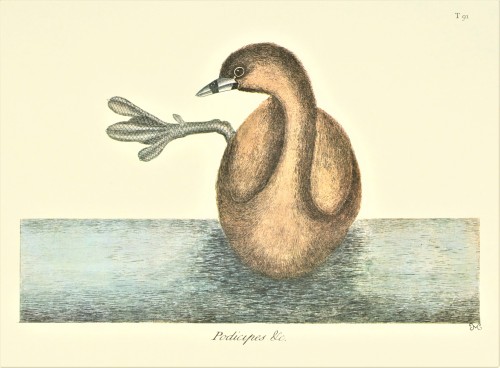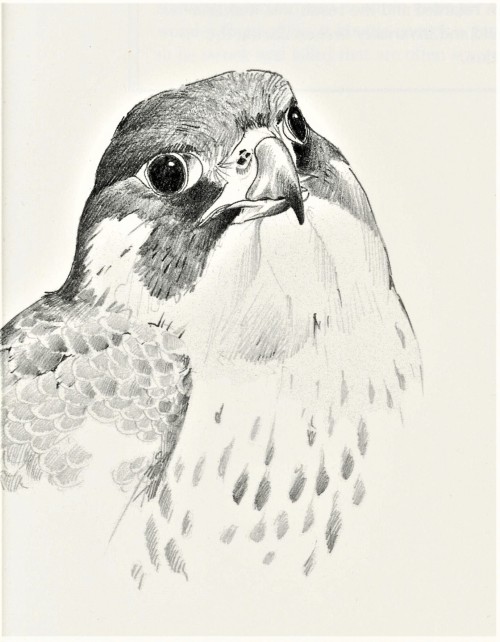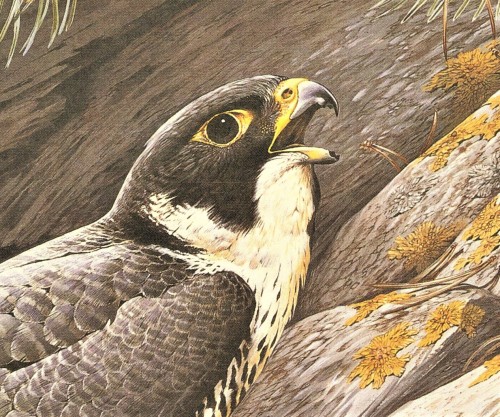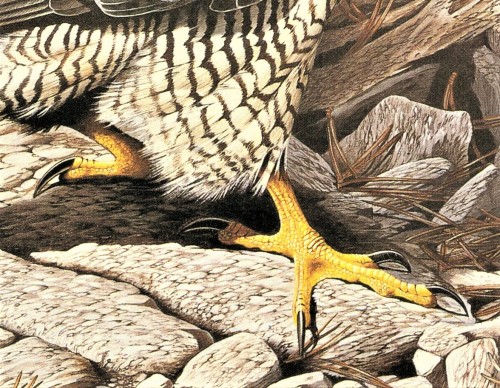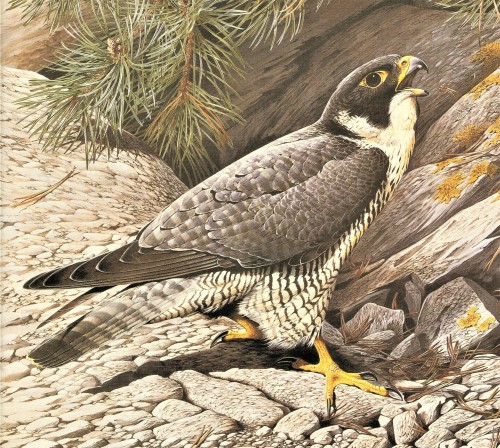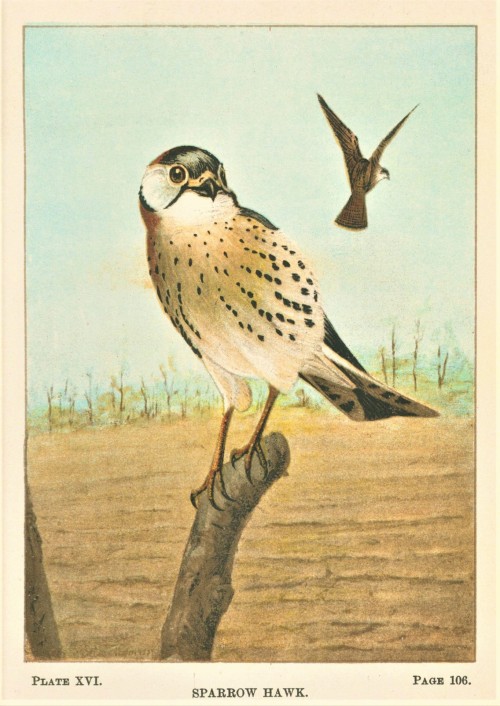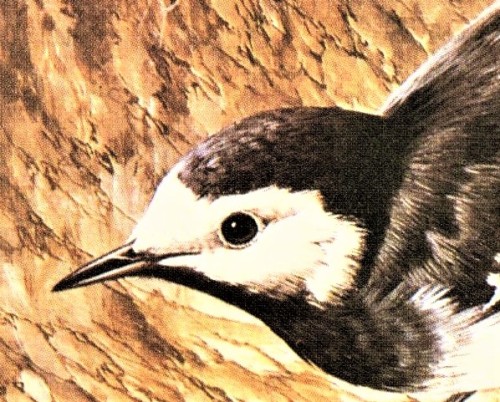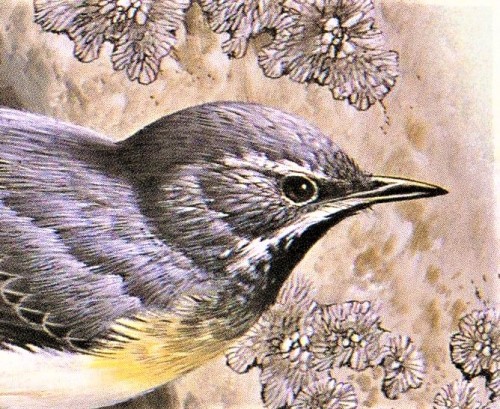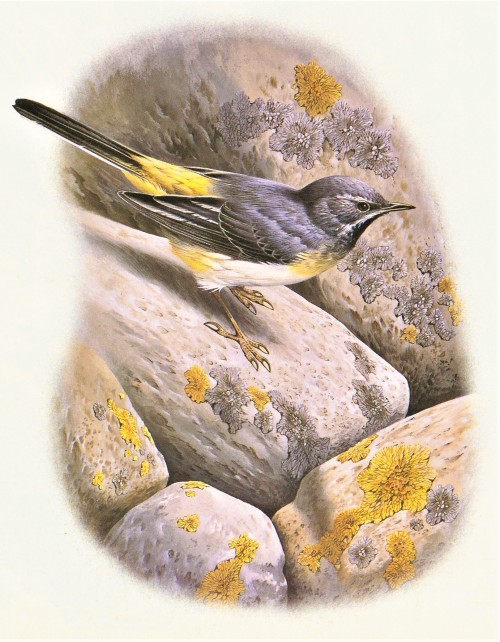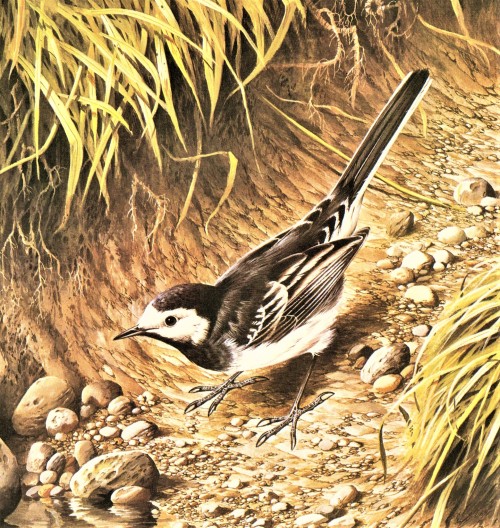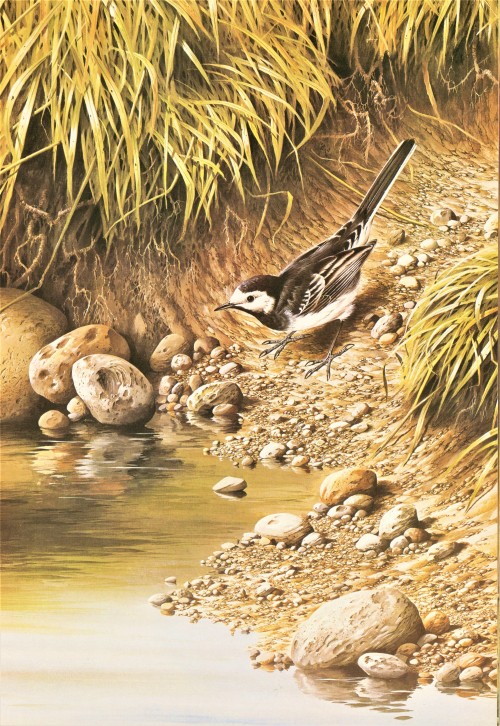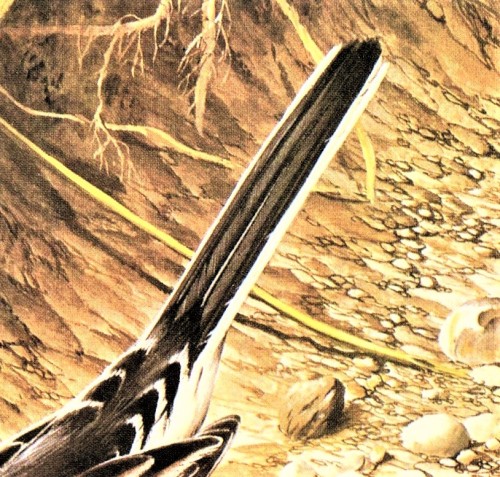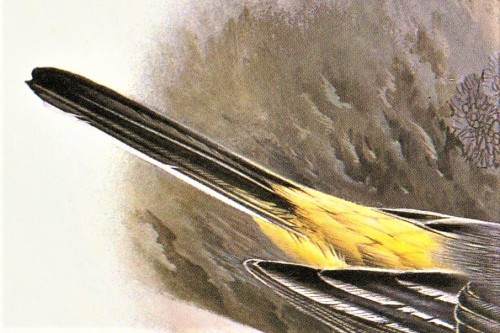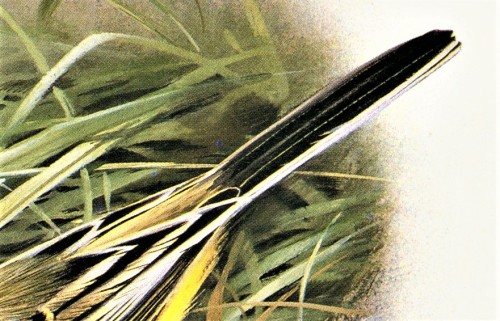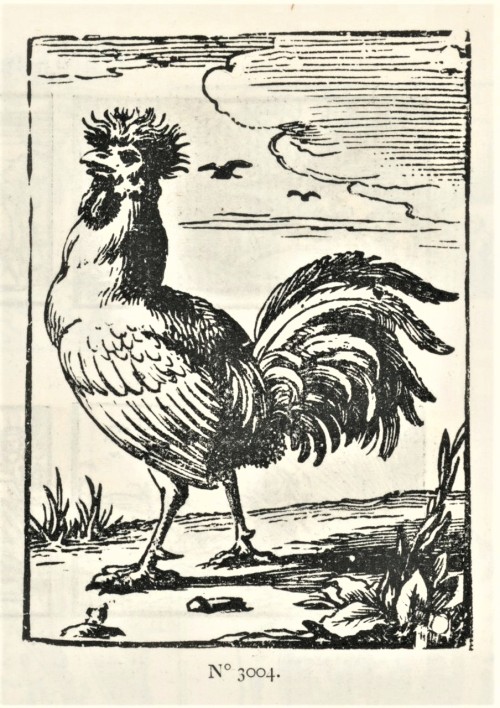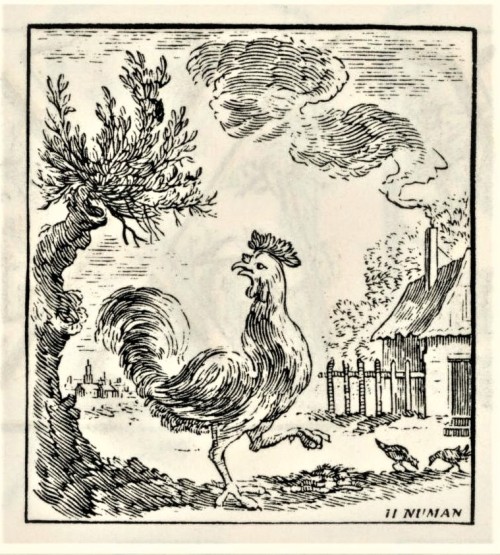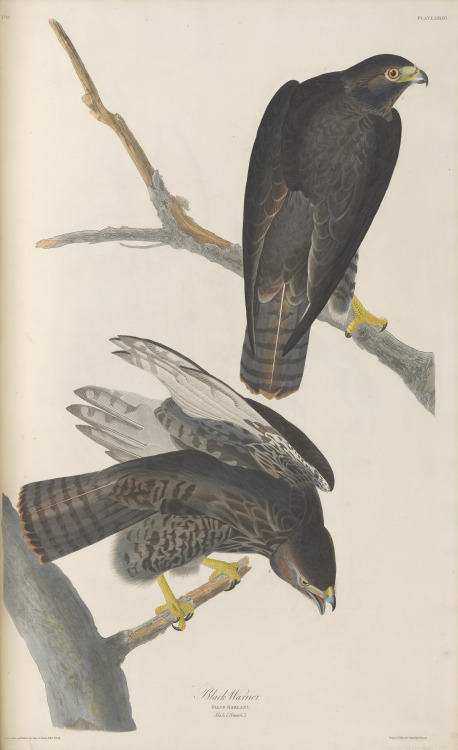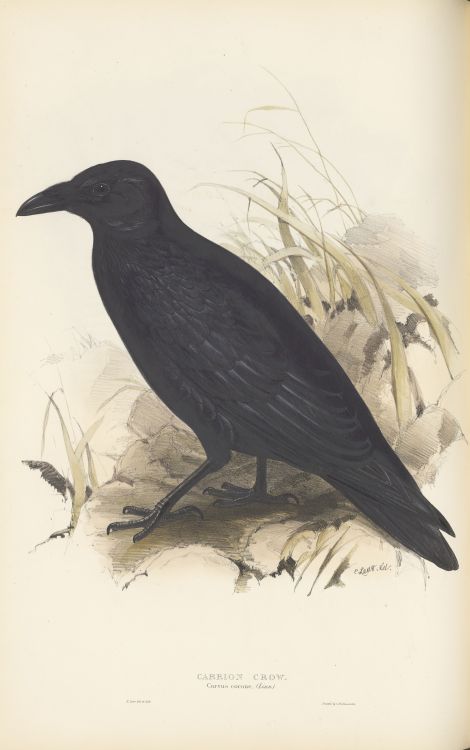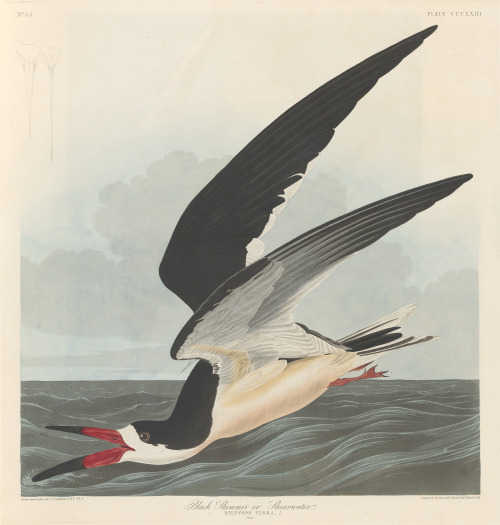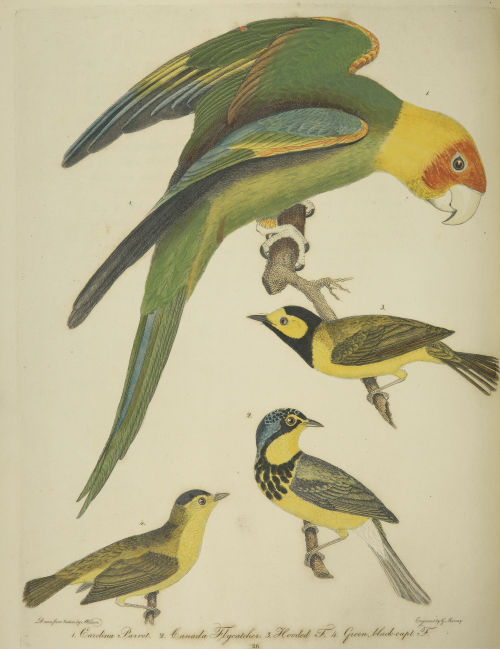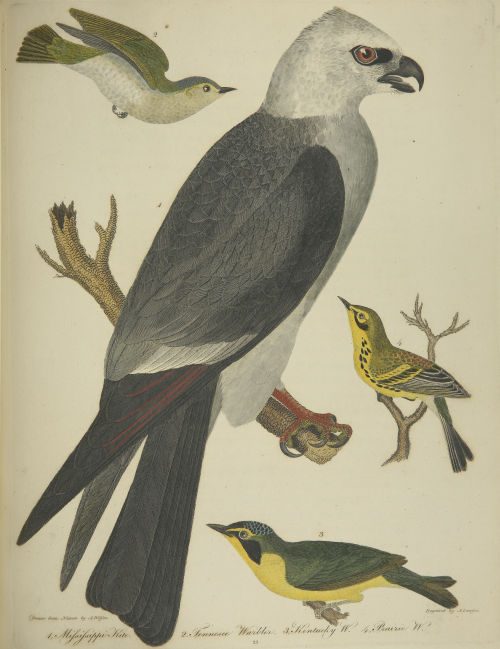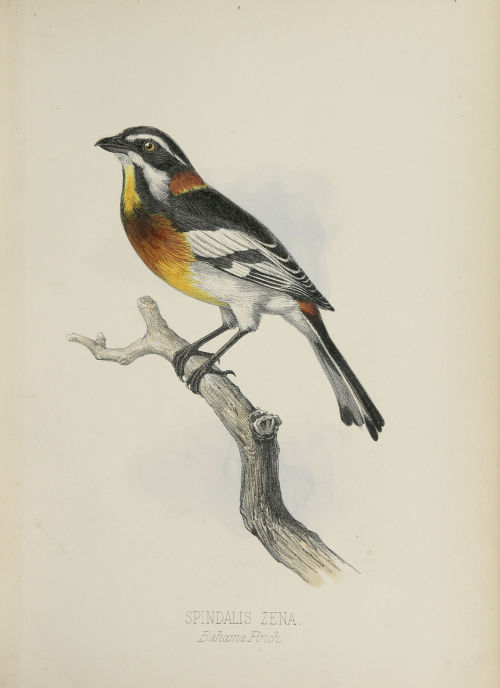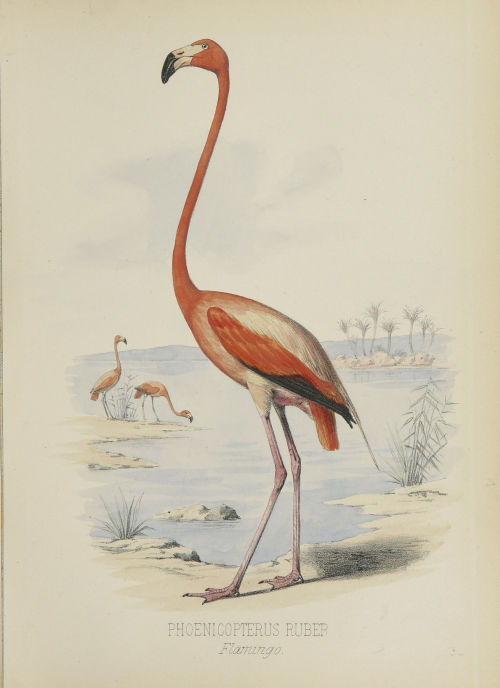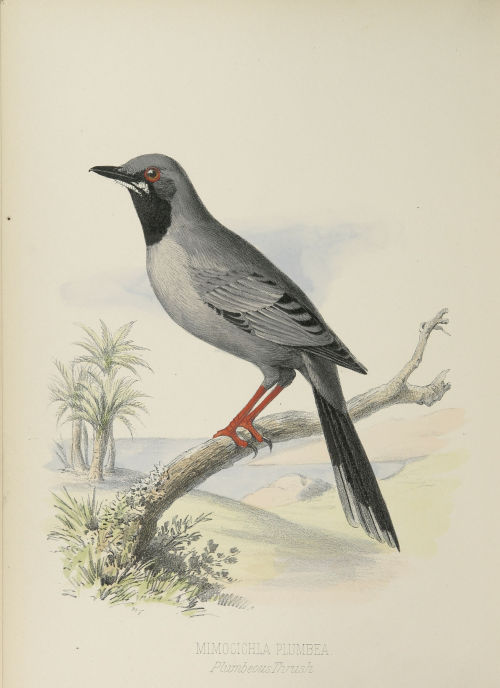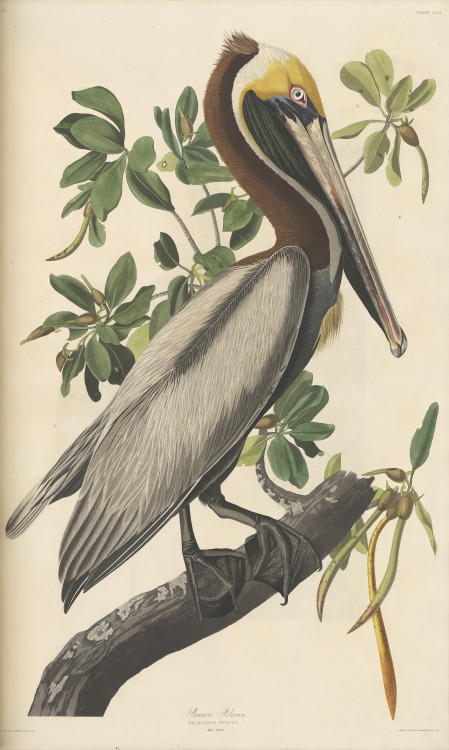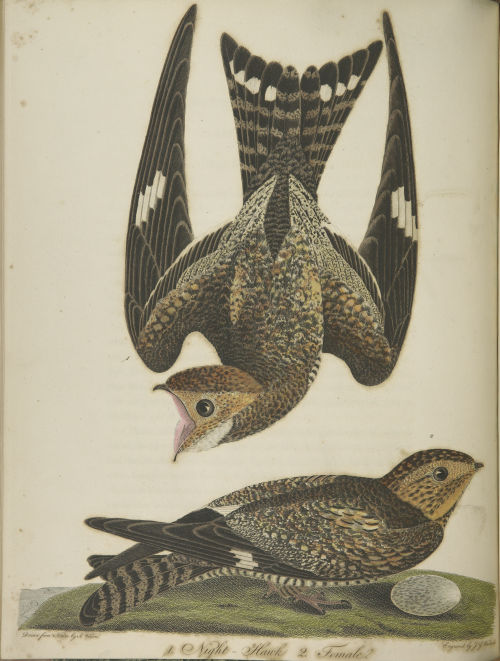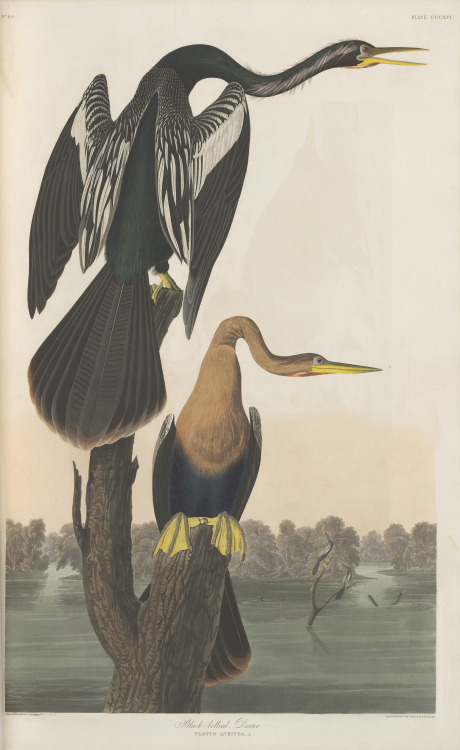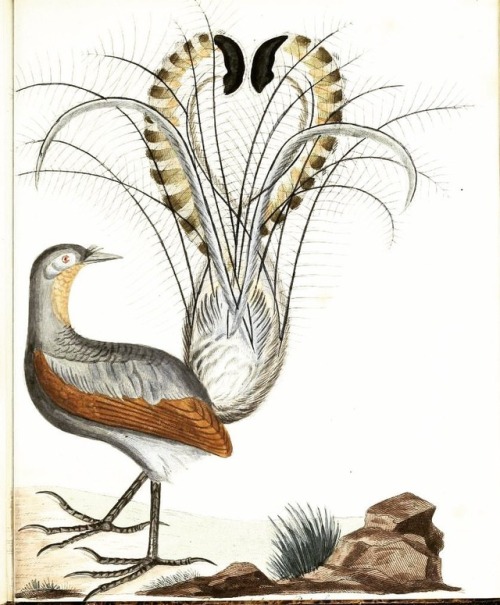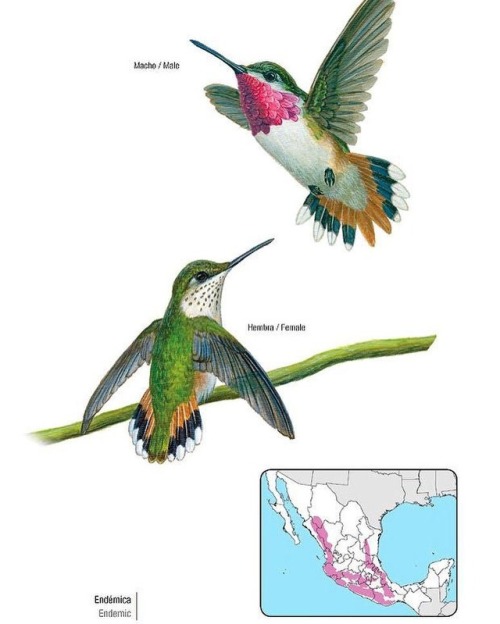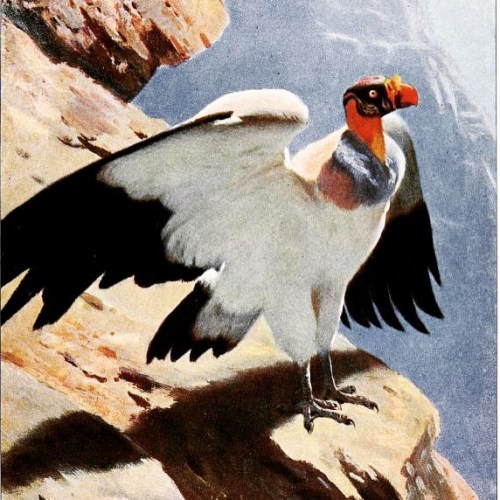#feathursday
A Catesby Waterfowl Feathursday
We’re having a pretty wet April here in southeastern Wisconsin, which puts us in mind of our feathered friends who just love the water. These three fellows come from our 1974 folio facsimile set of English naturalist Mark Catesby’sNatural History of Carolina, Florida and the Bahama Islands.Originally published between 1729 and 1747, our facsimile is reproduced from the 3rd edition housed at the Boston Athenaeum, published in a limited edition of 500 copies by The Beehive Press of Savannah, Georgia. The set was designed and printed by The Stinehour Pressof Vermont, with plates printed by The Meriden Gravure Company.
Shown here from top to bottom are:
- Laughing Gull(Leucophaeus atricilla).
- Pied-billed Grebe(Podilymbus podiceps).
- White-cheeked Pintail(Anas bahamensis).
View other posts from Catesby’s Natural History.
Post link
A Peregrine Feathursday
ThePeregrine Falcon (Falco peregrinus) has made a remarkable comeback here in Wisconsin since its precipitous decline starting in the 1950s. While they are still endangered, they are gracing our skies in slowly increasing numbers every year, and they are no longer an uncommon neighbor. In Milwaukee we have several mating pairs and our tall city structures provide excellent nesting sites, including here at UWM on top of our Engineering and Math Science Building, which has its own falconcam to observe nesting behavior, but not much is happening this season yet. The city also offers an abundance of prey, so Peregrines are quite at home here.
The drawings and the painting presented here are from our folio volume Birds, The Paintings of Terance James Bond, by British bird artist Terance James Bond, published in Cambridge, England, by the Lutterworth Press in 1988. Of his painting of the Peregrine, Bond writes:
The bird shown in my painting is an adult male … calling from what could be a potential nesting site. As can be seen, various shades of grey are the predominant colours in the picture, but I felt this worked well. The high points of the painting are, of course the bird’s head and feet. Apart from being the most important part of a Falcon’s equipment, they also lend a note of relief to the painting by being bright yellow. The branches of the Scots pine introduce an extra colour and a different element in the form of foliage and help soften what is otherwise a very strong composition.
View moreposts with paintings by Terance James Bond.
Post link
A Hawkish Fearthursday
With what is going on in the world today, a few of us are feeling a little hawkish, but instead of acting on these feelings in some bellicose way, we’ve decided to channel that angst into these images of lovely North American raptors. These are color lithographs from our 1907 edition of Bird-Life, A Guide to the Study of our Common Birds, by American ornithologist Frank M. Chapman, with illustrations by the English-Canadian-American wildlife artist Ernest Thompson Seton, published in New York by D. Appleton and Company. Shown here from top to bottom:
- American Kestrel(Falco sparverius), identified here as a Sparrow Hawk.
- Red-shouldered Hawk(Buteo lineatus).
- Northern Harrier (Circus hudsonius), identified here as a Marsh Hawk.
- Sharp-shinned Hawk(Accipiter striatus).
- Osprey(Pandion haliaetus).
While all are “hawkish,” their familial relationships aren’t always straightforward. Of the birds shown here, all are in the order of Accipitriformes, except for the American Kestrel which is in the entirely separate order of Falconiformes. The rest are in the family Accipitridae, except the Osprey, which is in the family Pandionidae. Of the remaining Accipritidae in this group, all are in different sub-families and genera and … oh the family politics!
We just hope that your own hawkishness is spent contemplating the beauty and grace of this very diverse group of birds.
Viewother posts from Bird-Life.
Post link
A Wagtail Feathursday
This week we highlight some Wagtailsin the genus Motacilla. The only wagtails found in North America are subspecies of the Eurasian Yellow and White Wagtails that have established a foothold in far western Alaska. Therefore we turn to the three species of wagtail most commonly found in Europe:
- White Wagtail(Motacilla alba). A black and white bird, a subspecies of which, the Pied Wagtail, most commonly found in Britain, is shown here.
- Grey Wagtail(Motacilla cinerea). A grey-headed bird with yellow rump and underparts.
- Yellow Wagtail(Motacilla flava). A bird with bright yellow underparts from chin to rear.
All of these birds have long dark tails with white outer bars. Their common name derives from their most conspicuous feature, their constantly wagging tails. Another common feature is that they all prefer habitats with running water, although the White Wagtail, especially the Pied subspecies in England, have accommodated themselves to urban environments and often can be found feeding on insects on lawns, playing fields, parking lots, and flat roofs.
Our featured wagtails come from reproductions of paintings in our folio volume Birds, The Paintings of Terance James Bond, by British bird artist Terance James Bond, published in Cambridge, England, by the Lutterworth Press in 1988.
View moreposts with paintings by Terance James Bond.
Post link
Dutch-FoundryFeathursday Roosters
ROOSTERS!!
This past Typography Tuesday, we highlighted some fancy-pants wood-engraved initialsfrom Charles Enschedé‘s historical survey of Dutch types, Fonderies de caractères et leur matériel dans les Pays-Bas du XVe au XIXe siècle,published in Harlem by De Erven F. Bohn in 1908. Besides surveying metal and wood types used in Dutch printing, this weighty tome also includes many pages of historic cuts used by Dutch printers.
Because we are in somewhat of a fowl mood, today we present a sampling of ROOSTERS! from Mr. Enschedé‘s selection of cuts. We’re cock-sure you’ll just crow over these fine-feathered foundry fellows. Click on the images for the engraving credits.
View other posts related to the Enschedé type-founding firm.
Post link

From: Pantalogia. London : J. Walker, 1819
AE5 .P2 1819 vol. 1
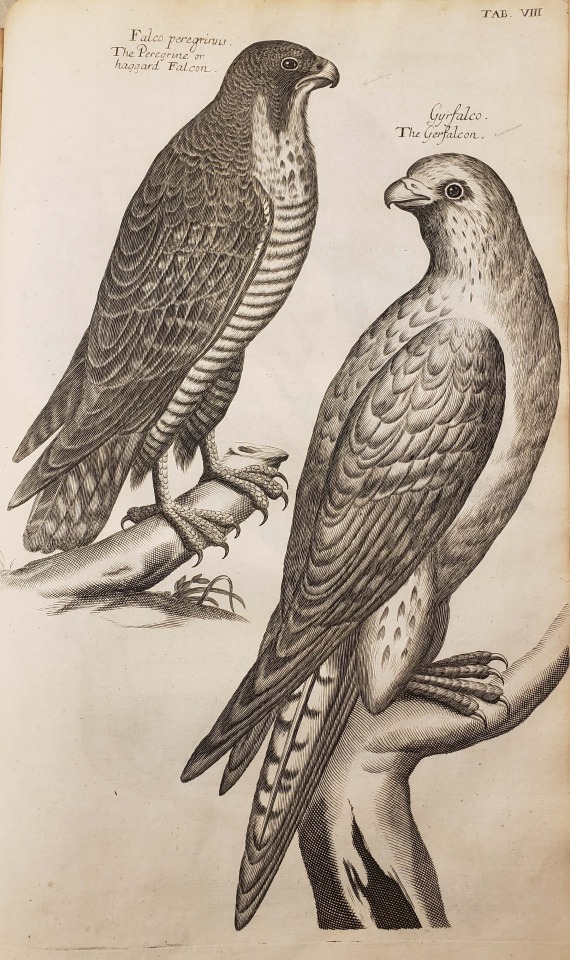
From: Willughby, Francis, 1635-1672. Ornithology. London : Printed by A.C. for J. Martyn, 1678
QL673 .W72

Black-throated green warbler
From: Baird, Spencer Fullerton. A history of North American birds. Boston : Little, Brown, 1875
QL681 .B16 volume 1
Selections from The birds of Europe v. 04, by John Gould. Plates drawn from life and on stone by J. and E. Gould and E. Lear.
Post link
Carrion crow. From The birds of Europe v.03, 1837 by John Gould. Plates drawn from life and on stone by J. and E. Gould and E. Lear.
Post link
Selections from American ornithology v.03, 1811.
The Carolina parrot or parakeet in the top image is now unfortunately extinct. Due mostly to humans hunting them for their colorful feathers for fashion purposes. These birds were also captured and sold in the pet trade and also battled invasive species in their natural habitat.
Post link
Blue throated warbler. From The birds of Europe. V.02, by John Gould, 1837.
Plates drawn from life and on stone by J. and E. Gould and E. Lear.
Post link
White headed eagle. From The birds of Europe v.01 by John Gould, 1837. Plates drawn from life and on stone by J. and E. Gould and E. Lear.
Post link
Spoonbill. From The birds of Europe v.04 by John Gould, 1837. Plates drawn from life and on stone by John and Elizabeth Gould and Edward Lear.
Post link
Great spotted cuckoo. From The birds of Europe, v.03, 1837. By John Gould, plates drawn from life and on stone by J. and E. Gould and E. Lear.
Post link

Is it already Feathursday??
This greater roadrunner (Geococcyx californianus) is racing into the weekend full speed ahead!
SciArt by Robert Wilson Shufeldt for Ibis (1885), the scientific journal of the British Ornithologists’ Union.
View more in the Biodiversity Heritage Library (@biodivlibrary) with thanks to the Research Library of the American Museum of Natural History (@amnhnyc) for digitizing.

Happy Feathursday!
Barn swallows (Hirundo rustica). On the right is the subspecies that can be found in Egypt.
SciArt from Naturgeschichte der Vögel Mitteleuropas, Vol. 4 (1901). View more in the Biodiversity Heritage Library with thanks to the Smithsonian Libraries and Archives for digitizing.

Happy Feathursday!
Eurasian spoonbill(Platalea leucorodia).
SciArt by Elizabeth Gould and John Gould for The Birds of Europe, Vol. 4 (1837). View more in the Biodiversity Heritage Library with thanks to the Smithsonian Libraries and Archives for digitizing.



Happy Feathursday!
This week features a trio of nests with blue eggs from the marvelous Illustrations of the Nests and Eggs of Birds of Ohio, Vol. 1 (1886).
Top:Grey Catbird(Dumetella carolinensis) by Virginia Smith Jones.
Middle:American Robin(Turdus migratorius) by Eliza Jane Shulze.
Bottom:Wood Thrush(Hylocichla mustelina) by Genevieve Estelle Jones.
View more of these beautifully detailed eggs and nests in the Biodiversity Heritage Library (@biodivlibrary) with thanks to the Smithsonian Library and Archives (@smithsonianlibraries) for digitizing.
We’re celebrating the wonder of #trees for #Feathursday! Explore Tenants of the Trees (1907) by Clarence Hawkes, which was contributed for digitization by @amnh to #BiodiversityHeritageLibrary: https://biodiversitylibrary.org/page/6478661
_________________________________________________
#Birds #Tree #PublishersBindingThursday #BookBinding #BookCovers #FancyBioBooks #FancyBookBinding #AMNH #AmericanMuseumofNaturalHistory #BHLib #Biodiversity #NaturalHistory #NatHist #ScientificIllustration #ScientificArt #OpenAccess #Libraries #Archives #SpecialCollections #LibrariesofInstagram #IGLibraries #IG_Libraries #AMNH
Post link
Happy #Feathursday! The Eastern Rosella (Platycercus eximius) is native to southeast #Australia and #Tasmania. #SciArt by James Sowerby for “Zoology of New Holland” ([1793]-1794), with text by George Shaw. Contributed to the #BiodiversityHeritageLibrary by @museumsvictoria as part of #BHL Australia: http://biodiversitylibrary.org/page/40653675
————————————–
#BHLib #Biodiversity #NaturalHistory #NatHist #ScientificIllustration #ScientificArt #OpenAccess #Libraries #Archives #SpecialCollections #MuseumsVictoria #sciart #BHLAu #LibrariesofInstagram #IGLibraries #IG_Libraries
Post link
Happy #Feathursday! Great Crested Grebes (Podiceps cristatus) carry their babies on their backs while swimming and diving, helping to teach the chicks to swim and dive relatively quickly after hatching. This illustration was done by the famed French artist Roger Reboussin (1881-1965) in 1952 for the Bulletin du Muséum National d'Histoire Naturelle, 2nd Series, Tome 24 (Jan. 1952). Contributed for digitization in #BiodiversityHeritageLibrary by Muséum national d'Histoire naturelle (@le_museum): https://biodiversitylibrary.org/page/54570322
_________________________________________________
#GreatCrestedGrebes #Paris #France #Birds #Ornithology #BHLib #Biodiversity #NaturalHistory #NatHist #ScientificIllustration #ScientificArt #OpenAccess #Libraries #Archives #SpecialCollections #MNHN
Post link
Happy #Feathursday! Superb lyrebird (Menura novaehollandiae) from “Johann Lathams allgemeine Uebersicht der Vögel” Bd.4:t.1 (1811). German translation by Johann Matthäus Bechstein of John Latham’s “A General Synopsis of Birds.” Digitized for #BiodiversityHeritageLibrary by @natural_history_museum Library: https://biodiversitylibrary.org/page/54265874
Learn more about this title on our blog: http://blog.biodiversitylibrary.org/
————————————
#birds #bird #WildOz #naturalhistory #biodiversity #bhlib #bhl #NHMLondon #sciart #NatHist #ScientificIllustration #ScientificArt #OpenAccess #Libraries #Archives #SpecialCollections #LibrariesofInstagram #IGLibraries #IG_Libraries
Post link
#Hummingbirds for #Feathursday! At an average weight of 2.2 g, the bumblebee hummingbird (Atthis heloisa) is one of the smallest birds in the world. Endemic to the Americas, it is predominantly found in #Mexico, but vagrant specimens have been found in the southwestern United States.
#SciArt by Marco Antonio Pineda Maldonado for “Colibríes de México y Norteamérica” (2014) by María del Coro Arizmendi Arriaga and Humberto Berlanga. Digitized in the #BiodiversityHeritageLibrary by CONABIO under CC-BY-NC-SA: https://biodiversitylibrary.org/page/49524501
————————————
#BHLib #BHL #birds #bird #hummingbird #biodiversity #naturalhistory #CONABIO #BHLMEXICO #ScientificIllustration #ScientificArt #OpenAccess #Libraries #SpecialCollections #LibrariesofInstagram #IGLibraries #IG_Libraries
Post link
This King vulture (Sarcoramphus papa) is ready for takeoff on this #Feathursday! #SciArt by Friedrich Wilhelm Kuhnert for Richard Lydekker, Wild Life of the World, Vol. 2 (1916). Contributed for digitization by the Gerstein Science Information Centre (@gersteinlibrary), University of Toronto Libraries (@uoftlibraries) to #BiodiversityHeritageLibrary. https://www.biodiversitylibrary.org/page/21739111
_________________________________________________
#KingVulture #Vultures #Birds #Ornithology #BHLib #Biodiversity #NaturalHistory #NatHist #ScientificIllustration #ScientificArt #OpenAccess #Libraries #Archives #SpecialCollections #LibrariesofInstagram #IGLibraries #IG_Libraries #UniversityofToronto #UofTLibraries #UofT
Post link


